PDF chapter test TRY NOW
Our body needs proteins for growth, repair of body cells and tissues, and other body functions like digestion. It gives structure and support to our cells. Proteins are composed of carbon, hydrogen, oxygen and nitrogen. They are more complex and larger than of carbohydrates.
Proteins are essential nutrients that are also called the building blocks of the body. They are usually considered as "healthy foods".
Hence, people suffering from various health issues prefer taking more protein-rich food as a replacement for carbohydrates. Protein sources include pulses, eggs, chicken, fish, nuts, soya bean, grams, sprouts and milk.
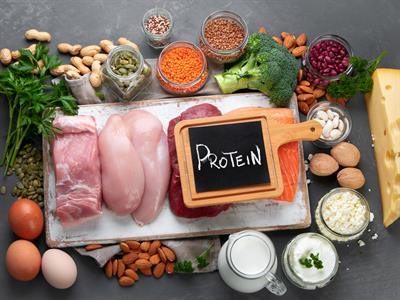
Sources of protein
A protein is made up of one or more chains of amino acids. Amino acids are the basic building blocks of protein. Each of the amino acid residues are linked by peptide bonds to make a polypeptide chain - protein.
Amino acids comprise of a basic (amino group), and an acidic group (carboxyl group).
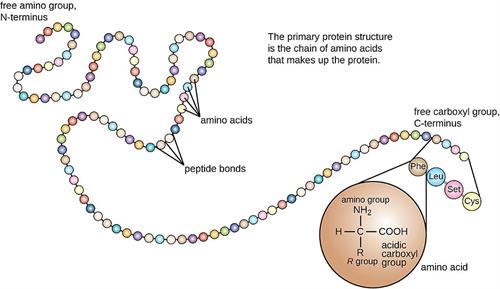
Amino acids link together to form polypeptides of protein
There are \(20\) amino acids in total.
Types of amino acids:
1. Essential amino acids
2. Non-essential amino acids
1. Essential amino acids:
Essential amino acids cannot be biosynthesized in the body. These amino acids must be obtained from the diet. This is because the human body lacks the metabolic pathways required to synthesize the essential amino acids.
- Histidine
- Isoleucine
- Leucine
- Lysine
- Methionine
- Phenylalanine
- Threonine
- Tryptophan
- Valine
2. Non-essential amino acids:
These amino acids can be made by humans and thus is not essential in the human diet. There are \(11\) non-essential amino acids.
- Arginine
- Alanine
- Aspartic acid
- Asparagine
- Cysteine
- Glutamine
- Glutamic acid
- Glycin
- Proline
- Serine
- Tyrosine
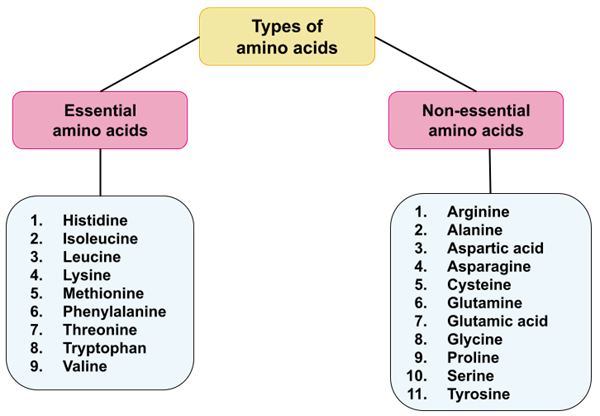
List of essential and non-essential amino acids
Fats
Fats are also energy providers that keep us healthy and active. It provides more energy than that of carbohydrates. Fats maintain cell structures and are involved in metabolic functions. Fats also insulates the body and protects the cells present in the body. Sources of fats include butter, ghee, cheese, milk, paneer, meat, nuts, fish, egg yolk etc.
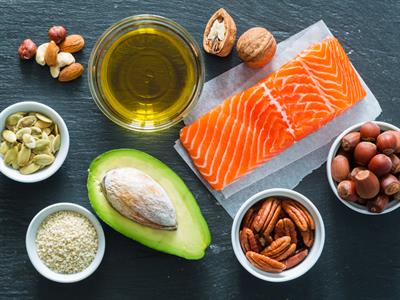
Sources of fat
There exists good fats and bad fats. Good fat include unsaturated fats,which are polyunsaturated and monounsaturated fatty acids.
Bad fats include trans fats and saturated fats, which are found in higher quantity in french fries, baked foods (cakes, pastries) and processed snacks.
Important!
Monounsaturated fatty acids are present in nuts, peanut butter, almond butter, and vegetable oils.
Essential fatty acids:
Essential fatty acids cannot be synthesized in the body. These fatty acids must be obtained from the diet. Essential fatty acids include:
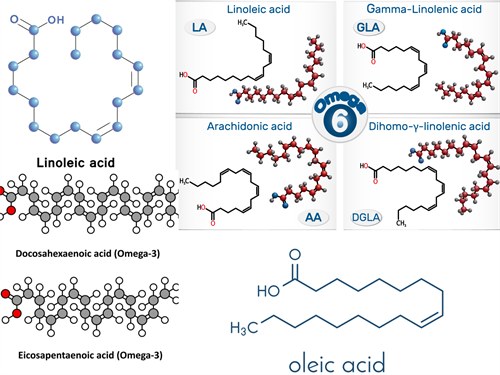
Different types of essential fatty acids
1. Omega 3 fatty acids - Alpha-linolenic acid (\(ALA\)), Eicosapentaenoic acid (\(EPA\)), Docosahexaenoic acid (\(DHA\))
2. Omega 6 fatty acids - Linoleic acid (\(LA\)), Gamma linolenic acid (\(GLA\)), Arachidonic acid
3. Omega 9 fatty acids - Oleic acid
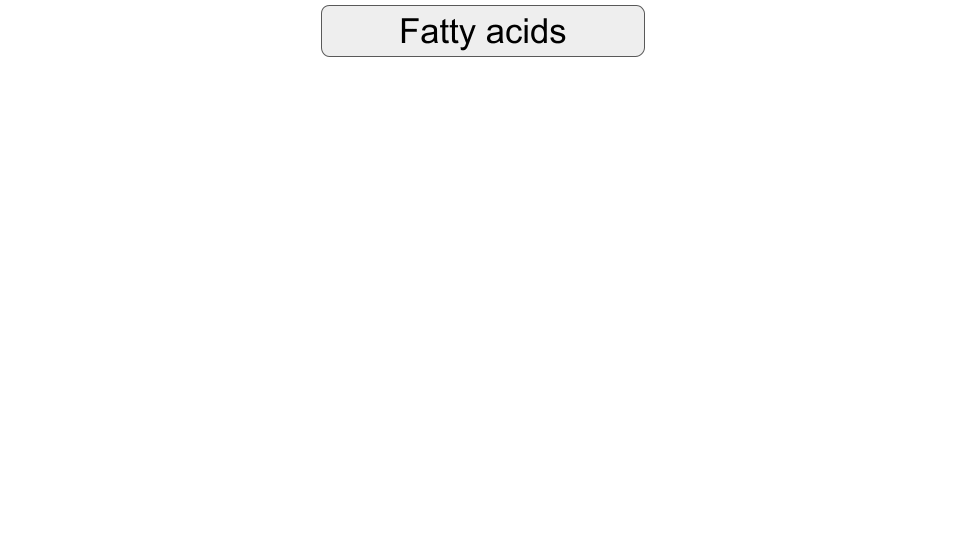
Classification of fats
But fat-rich foods, when taken in greater quantity, will lead to a lot of health complications.
Reference:
https://upload.wikimedia.org/wikipedia/commons/thumb/0/03/OSC_Microbio_07_04_primary.jpg/1024px-OSC_Microbio_07_04_primary.jpg
